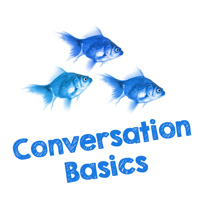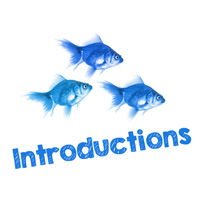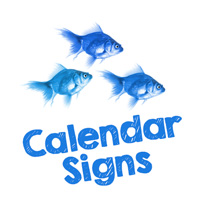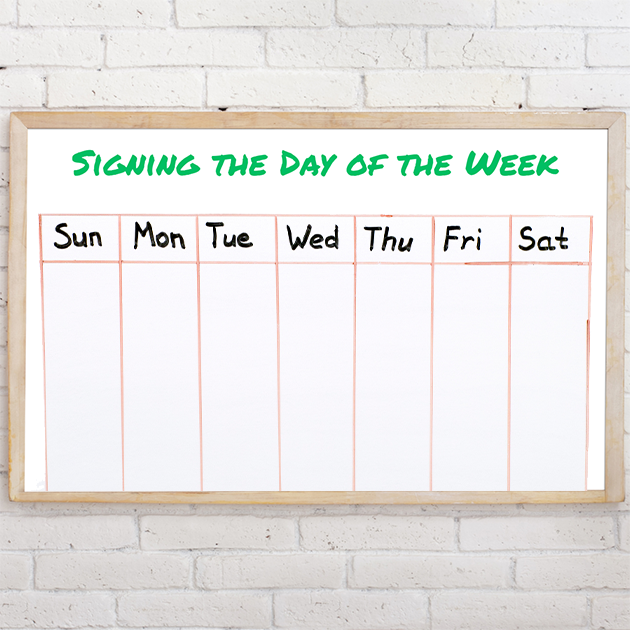
Signs That Are Close... But Not the Same — Family
This article is part of our “Signs That Are Close... But Not the Same” series, which highlights signs that look similar, but have different meanings.
The ASL signs shown below look similar, but are not the same. There are many ASL signs that when produced look similar, but in fact have a completely different meaning. Below you will find examples of such signs. Watch closely to see if you can see the differences. In addition, watch my eyebrows, look to see when I tilt my head or lean my body in a certain way, even what my mouth is doing. These nuances are called inflections and trust me, inflections matter.
These examples are all family signs.
1. Family vs. Class vs. Team
The same movement and palm orientation is used when signing FAMILY, CLASS, and TEAM. Think of the movement in the signs as a group of people coming together or sitting in a circle together. The sign for each word uses a different handshape that corresponds with the first letter of the word.
 |
||
2. Girl vs. Aunt vs. Daily
GIRL, AUNT, and DAILY all have the dominant hand sign similar handshapes with movement near the chin.
- GIRL has the dominant hand in the10 handshape, with the palm forward, stroke the face with the thumb, along the side of the chin twice. Think of a girl tying a bonnet.
- AUNT moves the dominant hand in the A handshape, with the palm forward, in a small circular motion, toward the chin. The A handshape (for Aunt) is signed in the location (near the chin) where several female family signs are formed.
- DAILY has the dominant hand in the A handshape, with the palm facing the face, touch the cheek repeatedly with the whole side of the fist. Think of signing many TOMORROWS.
 |
||
3. One-Handed Family Signs: Father vs. Mother and Grandfather vs. Grandmother and Uncle vs. Aunt and Nephew vs. Niece and Male Cousin vs. Female Cousin
Several family signs look similar because their form follows a pattern. These one-handed family signs all use the same sign in pairs, with the male version signed at the top of the head and the female version signed at the bottom of the head. Some say the male signs originated at the top of the head because men would wear top hats and the female signs originated at the bottom of the head, near the chin, because women would wear bonnets which tied at the chin.
-
FATHER and MOTHER use a 5 handshape and tap two times. The use of this handshape originated from the French sign for MAN.1
 |
-
GRANDFATHER and GRANDMOTHER start at the head, like FATHER and MOTHER, but then bounce out away from the head in a double arcing motion. Think of the motion as meaning a generation more than a FATHER or MOTHER.
 |
 |
 |
- MALE COUSIN and FEMALE COUSIN use a C handshape (for COUSIN). You may also sign a gender-neutral version of COUSIN, which also means multiple COUSINS of both genders.
 |
4. Man vs. Woman
If you blink at the beginning of the signs for MAN and WOMAN they look identical. The dominant hand in the 5 handshape starts at the head, then moves down to the middle of the chest. However, like many of the other family signs, the male sign, MAN, starts at the top of the head and the female sign, WOMAN, starts at the chin.
 |
5. Two-Handed Family Signs: Husband vs. Wife and Son vs Daughter and Brother vs. Sister
Like the one-handed family signs we shared above, these two-handed family signs all use the same sign in pairs, with the male version signed at the top of the head and the female version signed at the bottom of the head.
-
HUSBAND and WIFE have the cupped open B handshape start at the head and move down, landing on the palm of the non-dominant hand. These signs are similar to the sign for MARRY, so you may remember them by thinking of a HUSBAND as a male (start the sign where other male family signs start) you MARRY, and WIFE as a female (start the sign where other female family signs start) you MARRY.
 |
-
SON and DAUGHTER start with the dominant hand in the B handshape at the head and then it arcs down into the crook of the non-dominant elbow. These are both compound signs. SON is a combination of BOY (with a B handshape) + BABY. DAUGHTER is a compound sign of GIRL (with a B handshape) + BABY.
 |
-
When signing BROTHER and SISTER both hands change from the A handshape to the L handshape while the dominant hand moves from the head to resting on top of the waist-level, non-dominant hand.
 |
6. Child vs. Children
CHILD and CHILDREN are signed similarly, except CHILD uses one hand (for one child) and CHILDREN uses multiple hands (for multiple children). The handshapes used are also slightly different, with CHILD using a bent B handshape and CHILDREN using an open B handshape.
 |
How can I figure out the difference between signs on my own?
If you see two signs that look close, but not the same, and you’re not sure, you may use Signing Savvy features to help you figure out the difference. All of our signs have sign descriptions and memory aids that members may access. Reading the sign description and memory aids for the signs will help you figure out the small differences between them that your eyes don’t catch at first. We also recommend using the pause and slow motion feature to slow down the video, so you may take a closer look. These features are available to Signing Savvy members.
Resources
Signing Savvy is a participant in the Amazon Services LLC Associates Program, an affiliate advertising program designed to provide a means for sites to earn advertising fees by advertising and linking signingsavvy.com to Amazon properties. That means Signing Savvy may contain affiliate links. If you make a purchase after clicking on an affiliate link, your cost will be exactly the same regardless, but Signing Savvy will automatically receive a small commission. Your support is greatly appreciated and helps us continue to improve Signing Savvy!
ADVERTISEMENTS
 Brenda Cartwright is a Coda, seasoned interpreter, a master teacher, well known presenter, and author of several best selling sign language and interpreting textbooks from the RID Press. For 35 years Brenda was the Chair of the Sign Language Interpreter Program at Lansing Community College in Lansing, Michigan.
Brenda Cartwright is a Coda, seasoned interpreter, a master teacher, well known presenter, and author of several best selling sign language and interpreting textbooks from the RID Press. For 35 years Brenda was the Chair of the Sign Language Interpreter Program at Lansing Community College in Lansing, Michigan. Signs That Are Close... But Not the Same — Conversation Basics
Signs That Are Close... But Not the Same — Conversation Basics Signs That Are Close... But Not the Same — Introductions
Signs That Are Close... But Not the Same — Introductions Signs That Are Close... But Not the Same — Calendar Signs
Signs That Are Close... But Not the Same — Calendar Signs






